#lewis h latimer
Explore tagged Tumblr posts
Text
P.S. 056 Lewis H. Latimer.
Weather in 7 days a week.
0 notes
Text
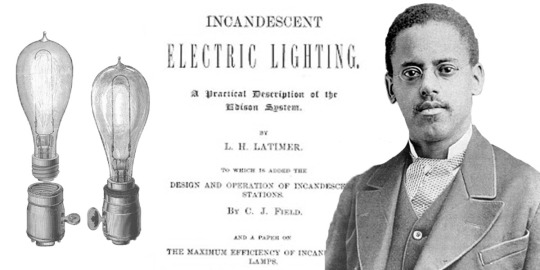
Lewis Howard Latimer (September 4, 1848 – December 11, 1928) was an inventor and patent draftsman. His inventions included an evaporative air conditioner, an improved process for manufacturing carbon filaments for light bulbs, and an improved toilet system for railroad cars. In 1884, he joined the Edison Electric Light Company where he worked as a draftsman and wrote the first book on electric lighting. The Lewis H. Latimer House, his landmarked former residence, is located near the Latimer Projects at 34-41 137th Street in Flushing, Queens.
He was born in Chelsea, Massachusetts, the youngest of the four children of Rebecca Latimer and George Latimer. His mother and father escaped from slavery in Virginia and fled to Chelsea, Massachusetts on October 4, 1842. The day they arrived in Boston, George was recognized by a colleague of his former slave owner and was arrested a few days later, on October 20, 1842. George’s trial received great notoriety; he was represented by Frederick Douglass and William Lloyd Garrison. He was able to purchase his freedom and live with his family.
He joined the Navy at the age of 15 and served as a Landsman on the USS Massasoit. After receiving an honorable discharge from the Navy on July 3, 1865, he gained employment as an office boy with a patent law firm, Crosby Halstead and Gould. He learned how to use a set square, ruler, and other tools. He was promoted to the position of head draftsman. He became a patent consultant to law firms.
He married Mary Wilson Lewis on November 15, 1873, in Fall River, Massachusetts. The couple had two daughters.
In 1879, he and his wife moved to Bridgeport, Connecticut, along with his mother, and his brother, William. They settled in a neighborhood called “Little Liberia,” which had been established in the early 19th century by free African Americans. #africanhistory365 #africanexcellence
4 notes
·
View notes
Text
On this day in Wikipedia: Tuesday, 21st November
Welcome, Bienvenida, Bienvenida, 你好 🤗 What does @Wikipedia say about 21st November through the years 🏛️📜🗓️?

21st November 2022 🗓️ : Event - 2022 West Java earthquake A magnitude 5.6 earthquake on the Indonesian island of Java kills between 335 and 602 people. "On 21 November 2022, at 13:21 WIB (UTC+07:00), a Mww 5.6 earthquake struck near Cianjur in West Java, Indonesia. The strike-slip earthquake occurred with a focal depth of 11 km (6.8 mi). Between 335 and 635 people died, 7,729 were injured and five remain missing. More than 62,628 homes were damaged..."

Image by National Agency for Disaster Countermeasure
21st November 2017 🗓️ : Event - Robert Mugabe Robert Mugabe formally resigns as President of Zimbabwe, after thirty-seven years in office. "Robert Gabriel Mugabe (; Shona: [muɡaɓe]; 21 February 1924 – 6 September 2019) was a Zimbabwean revolutionary and politician who served as Prime Minister of Zimbabwe from 1980 to 1987 and then as President from 1987 to 2017. He served as Leader of the Zimbabwe African National Union (ZANU) from 1975..."
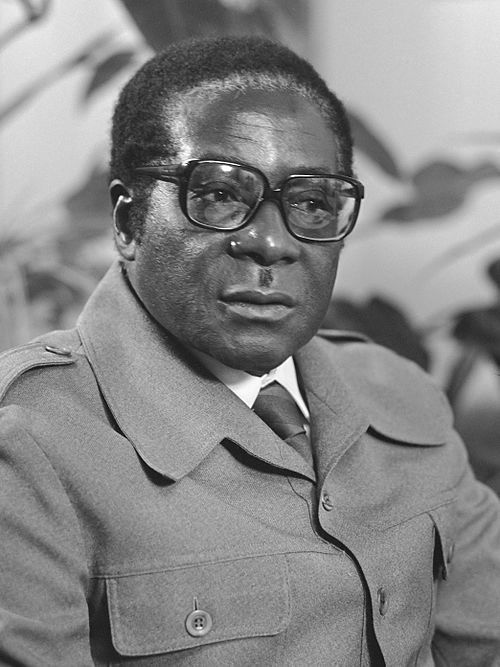
Image licensed under CC BY-SA 3.0 nl? by Koen Suyk / Anefo
21st November 2013 🗓️ : Event - Euromaidan Massive protests start in Ukraine after President Viktor Yanukovych suspended signing the Ukraine–European Union Association Agreement. "Euromaidan ( YOOR-ə-my-DAHN, YOOR-oh-; Ukrainian: Євромайдан, romanized: Yevromaidan, IPA: [ˌjɛu̯romɐjˈdɑn], lit. 'Euro Square'), or the Maidan Uprising, was a wave of demonstrations and civil unrest in Ukraine, which began on 21 November 2013 with large protests in Maidan Nezalezhnosti..."
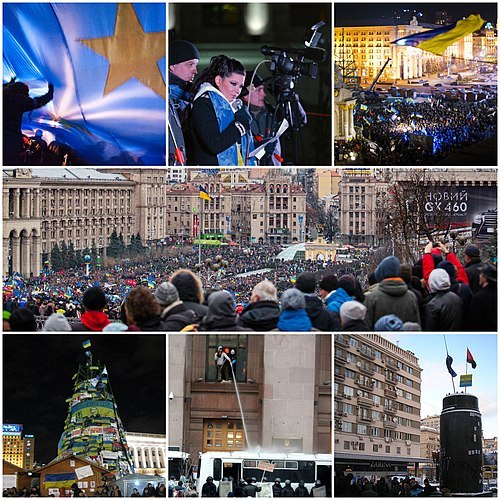
Image licensed under CC BY-SA 3.0? by Lystopad
21st November 1973 🗓️ : Death - Thomas Pelly Thomas Pelly, American lawyer and politician (b. 1902) "Thomas Minor Pelly (August 22, 1902 – November 21, 1973) was an American politician. He served as a U.S. Representative from the state of Washington between 1953 and 1973...."

Image by Unknown authorUnknown author
21st November 1922 🗓️ : Event - Rebecca Latimer Felton Rebecca Latimer Felton became the first woman to serve in the United States Senate, albeit for only one day. "Rebecca Ann Felton (née Latimer; June 10, 1835 – January 24, 1930) was an American writer, politician, activist, and slave owner who was the first woman to serve in the United States Senate, serving for only one day. She was a prominent member of the Georgia upper class who advocated for prison..."

Image by National Photo Company Collection.
21st November 1818 🗓️ : Birth - Lewis H. Morgan Lewis H. Morgan, American lawyer, anthropologist, and theorist (d. 1881) "Lewis Henry Morgan (November 21, 1818 – December 17, 1881) was a pioneering American anthropologist and social theorist who worked as a railroad lawyer. He is best known for his work on kinship and social structure, his theories of social evolution, and his ethnography of the Iroquois. Interested..."

Image by Unknown authorUnknown author
21st November 🗓️ : Holiday - Christian feast days: Rufus of Rome (no. 7 in list) "There are several saints named Rufus, of which the Roman Martyrology records ten; historical mention is made of the following ones, which have liturgical feasts: On 19 April, a group of martyrs in Melitene in Armenia, one of whom bears the name of Rufus. These martyrs are mentioned already in the..."
0 notes
Text
LEWIS H. LATIMER (1848-1928)
A TRULY ENLIGHTENING ENTRY. SALUTE!
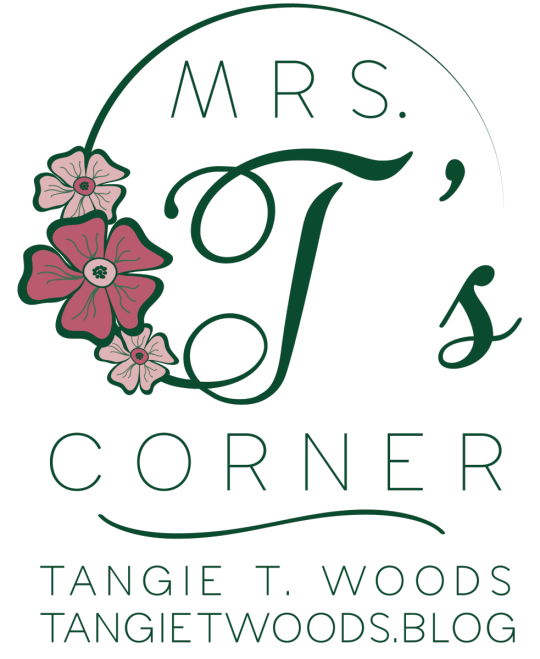
View On WordPress
0 notes
Text
Black Profiles In Courage by Kareem Abdul-Jabbar
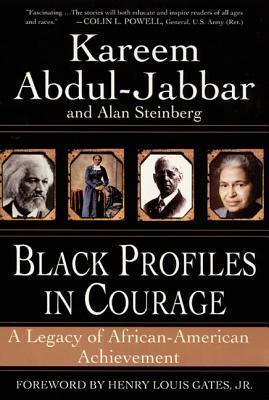
https://www.google.com/books/edition/Black_Profiles_in_Courage/MiVs1i8MvlAC?hl=en&gbpv=0
John F. Kennedy famously won the Pulitzer Prize for his (ghost written) book, Profiles in Courage. Playing on JFK’s book, Kareem Abdul-Jabbar’s book, Black Profiles in Courage, examines the contributions African Americans have had in American history.
I have not read JFK’s Pulitzer Prized book (yet), but I had envision his book as each chapter examining an individual and explaining why they displayed courage in their respective situation. Jabbar’s book does not do this. Instead it is more an overall look through American history and pointing out the presence and contributions of African people and African Americans. From their erasure during the years of exploration following the Columbus expedition to pointing out the numerous armed service members or inventors that history has forgotten or greatly diminished their presence. I was actually amazed at some of the claims such the groups of Africans that washed ashore in Indigenous America or the life of U.S. Marshal Bass Reeves or inventor Lewis H. Latimer, both of which I’m amazed that they don’t have their own feature length films made about them.
The book also is written in first person by Jabbar. He adds short sentences on his own personal experience regarding African American history and his personal experience in researching and finding out about the hidden and forgotten history of black America. Sometimes he does sound like Bill Crosby, adding a ‘damn kids! Put down your radio players and read a damn book’ mini rants in addition to correctly pointing out the systemic structure that has been in place to black knowledge and progress. Slavery, he points out, “...was about two things: economics and white supremacy (69).” But a major flaw that makes me almost not want to recommend this book is that there are footnotes. There is a bibliography but without pointing out where specific information comes from, I find much information, such as chapter one’s claims of worship of Africans in Meso-America seem pulled out of nowhere. “In 1975, incredible new archaeological evidence documented that blacks were present in Central, South, and North Americas,..” (2), Jabbar writes; but okay, what study? Where do I find it? It is not in the bibliography. Fifty years later, I would like to see this study to see if it holds up and how often it is cited.
Jabbar’s book requires basic knowledge of American history. His observations are good and I found myself writing down many things to further research. But with this book, it is more of a history book than mini biographies that I envision JFK’s book is like (I’ll read it one day). Jabbar’s lack of foot or end notes makes me struggle to truly suggest this book, especially considering that since 1993 (year of this book’s publication), there are various more detailed books of the history of black America that have come out by then. But if this is the lone book in your library or you see it on sale cheap, you are getting a good and informative read.
#black profiles in courage#kareem abdul-jabbar#african american#black lives matter#history#american history#america
0 notes
Photo

Grenada Pavilion Artist from 2019 shares her latest project being shown in Boston. Posted @withregram • @shervone_neckles What a proud moment to see my public art sculpture BEACON installed in the entrance of the Boston Museum of Science this weekend. It is a tremendous honor to have my sculpture serve as part of the tribute and festivities to recognize the Massachusetts born, inventor and pioneer electrical engineer, Lewis H. Latimer. My sincere thanks and appreciation to all who made this celebration and installation of BEACON possible the @museumofscience, @beamcenter, @lewislatimerhousemuseum and all of our supporters from the Latimer Society and local public officials as well as our friends and family cheering us on from afar. Thank you 🙏🏾 Make sure to plan a visit to see BEACON at the museum by going to @museumofscience @beamcenter, @lewislatimerhousemuseum @museumofscience #latimerbeacon #beamproject, #museumofscience, #latimersociety #lewislatimer, #lewislatimerhousemuseum, #beamcenter, #beacon #americanhistory, #blackhistory, #massachusettshistory, #massachuetts, #contemporaryartist, #grenadaartists #caribbeanartist #contemporaryart #shervoneneckles https://instagr.am/p/CoUvuf4rgfx/
0 notes
Text
You know Thomas Edison. Great with business and marketing. You know Nicola Tesla. The Genius Brain™. You know Alexander Graham Bell. The boy who wanted to phone home.
Let me introduce you to
Lewis Howard Latimer (c. 1848–c. 1928)
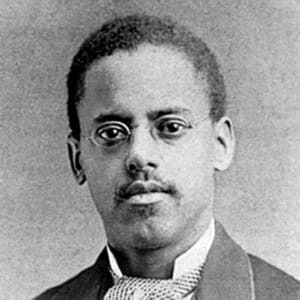
Lewis Howard Latimer was an inventor and draftsman best known for his contributions to the patenting of the light bulb and the telephone.
Who Was Lewis Howard Latimer?
Inventor and engineer Lewis Howard Latimer was born to parents who had fled slavery. Latimer taught himself mechanical drawing and drafting by observing the work of draftsmen while working at a patent firm. Recognizing Latimer's talent and promise, the firm partners promoted him from office boy to draftsman. In addition to assisting others, Latimer designed a number of his own inventions, including an improved railroad car bathroom and an early air conditioning unit.
Latimer's talents were well-matched to the post-Civil War period, which saw a large number of scientific and engineering breakthroughs. Working with Bell, Latimer helped draft the patent for Bell's design of the telephone. He was also involved in the field of incandescent lighting, a particularly competitive field, working for Hiram Maxim and Edison. [x]
Latimer wrote the first book on electric lighting, Incandescent Electric Lighting (1890) and supervised the installation of public electric lights throughout New York, Philadelphia, Montreal, and London. [x]
During the installation of lighting in Montreal, where a lot of people spoke only French, Latimer learned the language in order to competently instruct the workers. In London, he set up the first factory for the Maxim-Weston Electric Light Company. That required him to teach the workmen all the processes for making Maxim lamps, including glassblowing. In a brief nine months, Latimer had the factory in full production. [x]
11 notes
·
View notes
Video
youtube
on Jan 17 1882 - Lewis H Latimer was granted a patent for the so-called “Maxim lamp,”. This lamp used carbon filament which was better than what was being used at the time because this filament was tolerant of the high temperature needed to radiate light.

It was his job at the Crosby and Gould patent attorney office that his interest in the craft of mechanical drawing peaked. He was very talented and his talents lead him to being deeply involved in the drawing of Alexander Graham Bell’s invention the telephone. After 11 years Latimer left Crosby and Gould and began work at the electrical lighting company of Hiram S. Maxim. After taking on the study of electricity Latimer quickly came up with the Maxim lamp; which was patented on Jan 17 1882.
Reference http://edison.rutgers.edu/latimer/crosgld.htm https://goo.gl/AZNysX http://www.encyclopedia.com/people/history/historians-miscellaneous-biographies/lewis-h-latimer http://panafa.net/index.php?id=155
9 notes
·
View notes
Text
The Wisdom of Love (2021)
Love as presence, embodiment, and interdependence from the perspectives of Black humanists and freethinkers.
This talk was revised and expanded for the Washington Ethical Society, February 14, 2021.
There is an annual occurrence that I look forward to at this time of year: leftover Valentine’s chocolate is about to be on sale. I hope this turn of events brings comfort and joy to many. I do wonder, though, if there ought to be more to this season of commitment than a box of candy. Love is wild, powerful, wise, just, and compassionate. We don’t need to be romantically partnered to pay attention to love.
Knowing what I know of this community, even though it feels like I just arrived, I admire so many of you for your efforts to repair the world. I see healers of the mind and body, teachers, people devoted to caring for family members, scientists, activists, and artists. At the root of each person’s quest, I hear the voice of love: love for family and friends, love for the earth, love for humanity, love of beauty, love of the dizzying possibilities for discovery in our universe. Our minds can provide the analysis and our hands can provide the skills, yet the longings of our hearts keep us engaged and refreshed along the pathways of hope. We need our whole selves—rational, embodied, spiritual, and emotional—to make manifest the dream of a better world.
In this community, there are several labels that circulate, though I also know there are those in our community who prefer not to carry any label at all. We might call ourselves Ethical Culturists or Humanists or Free Thinkers. A few of us might call ourselves Unitarian Universalists. These movements all have a tinge of intellectualism to them, even as we insist that our values must be demonstrated in our actions. We prize reason, and we also need to remember that reason alone, without love, is incomplete.
Egbert Ethelred Brown, who was a Unitarian minister in Harlem in the early twentieth century, saw the wisdom in bringing our whole selves into community. Though early twentieth century Unitarianism and early twentieth century Ethical Culture were different movements, I think what he said can also apply in a place that Adler said is a religion for those who want it and a philosophy for those who don’t. Rev. Brown wrote, “Religion is ethics touched by emotion. If the intellect dominates and there is no hint of emotion, a cold and barren matter-of-factness results. Conversely, if emotion leads, unguided by intellect, we are doomed to a wild sea of fanaticism. Yet mind and soul united create one music, grander than before.” (Quote from “Cold Services,” p. 33 in the anthology Been in the Storm So Long, edited by Mark Morrison-Reed and Jacqui James; see also, Darkening the Doorways by Mark Morrison-Reed; more resources here, here, and here.)
I believe that emotions bring us a great deal of wisdom. We need to consult our feelings and gut instincts to make the best decisions. In particular, I think love in the broader sense offers three lessons that will help us live out our faith: groundedness, embodiment, and interdependence. Love keeps us here, rooted in the world as it is. Love is active, practical, and at one with our physical selves. Love remembers data and frameworks that our intellect may have forgotten, and revels in the unpredictable dance of change and growth. The wisdom of love teaches groundedness, embodiment, and interdependence.
Love Keeps Us Here
To be a community that brings out the best in each other and helps create a society where everyone can grow into being their best selves, we must be rooted in the world as it is, flinching neither from the pain nor the joy that is possible in the here and now. Each of the senses available to us helps us to understand the universe and our place in it. We think, touch, taste, and feel our way into making sense of the world. Love is the capacity that helps us to keep the doors of our perception open rather than escaping into abstraction or obsession. When we are able to truly love the world and the lives it holds, trying to hide is a less attractive option because escaping would separate us from love.
The power of love to draw us into the here and now, to embrace our souls with gentle, cupped hands and breathe fire into the embers, is a spiritual perspective. Lewis Latimer shared it. Latimer was an African American engineer in the late 19th and early 20th centuries. He was also a poet, as demonstrated in this piece, “Love is All.”
“What is there in this world, beside our loves,
To keep us here?
Ambition's course is paved with hopes deferred,
With doubt and fear.
Wealth brings no joy,
And brazen-throated fame
Leaves us at last
Nought but an empty name.
Oh soul, receive the truth,
E'er heaven sends thy recall:
Nought here deserves our thought but love,
For love is all.”
(“Love is All” by Lewis Latimer, p. 39 in the anthology Been in the Storm So Long, edited by Mark Morrison-Reed and Jacqui James; see also biographies here and here.)
Latimer suggests that our loves, plural, collectively form the strongest force that keeps us “here.” I can imagine several meanings to where “here” might be. It is not a fixed point. “Here” moves with life and time. Here is where we put one foot in front of the other. Here is the present moment, this time and place and plane of existence. Here we are, gathered in strength, rooted in the world as it is. Love keeps us connected with the ground of our being.
Love is Embodied
The second piece of wisdom is that love is embodied. Love inhabits physical form and manifests in the real actions of human beings. This is true at the personal level and at the societal level. When we are able to fall in love with the world, to keep faith with humanity while fully recognizing the human capacity for causing harm, affection becomes action. Similarly, when tangible actions and their effects lead to suffering, we know there is something is amiss. Love needs mindfulness and compassion to bear the best fruit.
Humanism, to me, is a movement of people who believe in people. We value human creations like art and literature, we seek human solutions to our shared challenges, and we value dignity and equality as humanitarian goals. Love is an irreplaceable ingredient in this tradition. People can do (have done, are doing) terrible things, individually and collectively. Love helps us to be humanists anyway, to believe that positive change is possible, that society still has something to celebrate, and that creating an environment for healing is worth the effort. We are sometimes disappointed and often heartbroken, yet we persist in the spirit of love.
Within the Humanist movement, there are those who say that it should be exclusively atheist, those who don’t think belief or non-belief is relevant or needs discussion, and those who find room in Humanism for theists who don’t mind saying so out loud as well as atheist and agnostic humanists. In all three cases, Humanism is rooted in human experience and human responsibility to create the world we long for, as well as an insistence on the worth of every person.
Wade McCree, Jr., was the third kind of Humanist. He was a vice moderator of the Unitarian Universalist Association in the late sixties. He was also the first African American to serve as the United States Solicitor General, and so had plenty of opportunities to see the best and the worst in people. He supported the idea of love as a force that helps us to be humanists anyway, even when the evidence challenges the idea of human goodness. He wrote:
“To me, one's religion is expressed in the manner in which one relates to other human beings. If one fights relentlessly against injustice, want, hate, and every form of exploitation, then one is a religious person. The love of God is not expressed by ritual or ceremony, but by loving.” ("By Loving" by Wade H. McCree, Jr, p. 18 in the anthology Been in the Storm So Long, edited by Mark Morrison-Reed and Jacqui James; obituary here)
Across the decades, leaders agree that fierce, open-hearted, actual-feet-on-the-ground love is an expression of their deepest commitments. People are worth caring for. Love longs for the well-being and abundant life of the beloved.
Love for people in general is embodied, and so is love for individual people in particular. For anyone who has ever cared for a child or an elder or a loved one who needs direct physical care, the earthiness of love is undeniable. Lifting, holding, and carrying are physically exhausting. Sleep deprivation depletes people mentally and spiritually. Yet people care for others, often without expectation of return. Within the wisdom of love, a person doesn’t have to produce anything or contribute to the GDP in order to matter.
Advocacy is also embodied. When it’s safe to do so again, people will be walking the halls of legislatures to demand policies that help people stay alive, and this is an act of love. Marching is embodied love. Vigils are embodied love. Using your voice and your dialing fingers for phone banking is an act of love.
Audre Lorde spoke about the intersections of poetry, dreams, care and advocacy - and about how this is different from a purely intellectual project - in her 1984 book, Sister Outsider. She wrote:
The white father told us: I think, therefore I am. The Black mother within each of us — the poet — whispers in our dreams: I feel, therefore I can be free. Poetry coins the language to express and charter this revolutionary demand, the implementation of that freedom.
However, experience has taught us that action in the now is also necessary, always. Our children cannot dream unless they live, they cannot live unless they are nourished, and who else will feed them the real food without which their dreams will be no different from ours. “If you want us to change the world someday, we at least have to live long enough to grow up!” shouts the child.
From Fannie Barrier Williams (who was featured in the Time for All Ages story earlier in the Platform) to Audre Lorde, it is clear that the wisdom of love is concrete, it is not a theoretical exercise. For over a century, Black freethinkers have been saying, with love, that all people deserve equality of access to health care, housing, and public services. Love feeds our commitment to abundant life. Wisdom knows that embodied care and advocacy are aspects of love.
We value people of all ages, races, levels of economic activity, genders, sexual orientations, and abilities. The force of our conviction is made real with concrete actions. Love is embodied.
Love Remembers Interdependence
We can fool ourselves into thinking we are logical all the time. I can appreciate the attraction of making moral choices through what seems like a coldly rational framework. I don’t believe that any of us are as rational as we think we are, but even if we could be, love brings us some of the data we actually need to make good decisions. Furthermore, sometimes data gives an illusion of permanence that doesn’t match the experience of being fully human.
If we only look at short-term consequences, we may fail to take into account the expense of disaster cleanup when we are figuring the cost of energy. Without love, we might not realize that it is against our long-term interests to cause species extinction as we scrape up the Great Barrier Reef. Without love, humans appear to be statistics. When humans become statistics, the result can be disastrous policymaking. Statistics might obscure the fact that Black lives matter, and that justice for immigrants makes us healthier as a nation, and that we have a choice about whether people go hungry and get evicted during a pandemic. Love is what reminds us of the fierce importance of looking out for each other.
Ethical arguments for environmental and social justice might be dismissed as mere sentimentality, because love is made out to be less reliable than money. But of course that’s not true. Our gut instincts are sometimes on to something. When we love without apology, we come to our senses. We remember that the potential results of our actions go beyond the predictive models. We remember the interdependence of all life. We remember our connection with the earth. We remember that community can be life-giving, in all the ways that community is defined. And we remember that the essence of life is change.
Alain Locke is another history-making Black freethinker whose ideas are relevant here. WES members have heard about Dr. Locke before, especially in the work of my Ethical Culture colleague Jé Exodus Hooper. Dr. Locke lived from 1885 to 1954. He was a philosopher, patron of the arts, and a professor at Howard University. Dr. Locke didn’t use the word “love” as often as he used the word “culture,” yet from the essayists and poets we’ve already heard today, I think it’s clear that there is a connection between the practice of love and the way we understand ourselves to be related to others. I am indebted to philosopher Leonard Harris for his journal article to help me understand what Dr. Locke had to say about culture and community.
Two of the ideas Locke wrote about might seem to be in tension with each other until they are closely examined. One idea is that race and culture are social constructs; that is, what draws people together in shared identity is influenced by what we see, hear, and experience; and that therefore it should be no surprise when the definition of an identity is unstable. That’s not a very controversial idea now, but he went out on a limb academically in the 1920’s for rejecting the idea that biological races exist and are biologically caused to express cultural traits.
The other idea provides creative interplay, but is not mutually exclusive with the first. Locke argued that people have an instinct to seek out people with whom they share some kind of similarity, and that even though that similarity is a social construct, this instinct to form communities is good. A shared experience with what it means to be assigned to a group as it is defined in that moment still provides what he called “a consciousness of kind,” with associated common interests and responsibilities, and is enough of a reason to lead to a sense of belonging. He wrote:
The final thing is that we shall see that human society must [have] a … consciousness of kind, and that consciousness of kind is a healthy[,] and a normal[,] and a fundamental social instinct.
(From A. Locke, Race, Contacts and Interracial Relations, Quoted in “Alain Locke and Community” by Leonard Harris, The Journal of Ethics 1:239-247, 1997. This article is behind a paywall, but we might be able to find someone with access. For a free resource on Alain Locke, the Stanford Encyclopedia of Philosophy has an entry that is thorough and peer-reviewed.)
Dr. Locke warned that the social instinct can go astray, and that the construct of an identity begins to be harmful when the identity becomes regarded as static. He goes on:
… normal and healthy instinct has a very abnormal expression from time to time in the false notions, the false conceptions[,] of kind which are not conceptions of social kind--not conceptions of civilization type, of the American civilization type--but [rather] conceptions of racial kind and conceptions of race type [as permanent and invariable].
(Ibid.)
Dr. Locke's support for the healthy social instinct is part of what drew him to be a patron of the arts. The 1925 publication that launched his reputation as “The Father of the Harlem Renaissance” included art, African artifacts, articles by Black intellectuals, and poems by such writers as Langston Hughes, Countee Cullen, and Angelina Grimke. In retrospect, Dr. Harris writes that this publication was “intended as a work ‘by’ rather than ‘about’ African Americans. It was a text exuding pride, showing African-American historical continuities, and revealing a new spirit of self respect.”
In other words, the things valued and created by the people who share an identity should be celebrated, not because they represent an objective reality or timeless virtues, but because the particulars draw people to connect with one another in a healthy, human way that helps people find a feeling of belonging.
Dr. Locke’s insistence that community is both always in the process of being socially constructed and vitally important as a human instinct reminds us that love isn’t just about who we think we are, it’s about who we are becoming, and about continuing to find ways we are related beyond the current social constructions. Everything that makes us who we are and leads us to places where we feel that we can belong is subject to change because we are part of an interdependent network of living, changing, mutually-affected influences and relationships. Even in this constantly-moving dance of being, Dr. Locke says that it is still important that we find community, and that we guard against the absolutes and the inflexibility that lead the instinct for community to go awry.
Love is wise because love remembers connection. When we love truly and deeply, the tug of emotions and relationships help us to account for data and frameworks that short-term thinking has forgotten. Even if identity and community are formed on ever-changing parameters, our human connections fuel compassion and a flexible landscape with room for healing.
Conclusion
I’ll be coming to a close soon, but I wanted to say a bit about Black History Month and how my thinking has developed with this Platform Address. I originally just wanted to say something about love, because today is a day for talking about love. As I researched sources, I came to understand that I had a great deal to learn about the perspectives of Black Humanists and freethinkers. While I am very far from being an expert on Black history, I believe all of us have a responsibility to study the whole history of the movements of which we are a part. The poets and essayists I have drawn from today bring lenses that are vitally necessary for understanding how we, in our close communities and in our larger society, have arrived where we are, and give us important perspectives from the history of the Humanist and free thought movements. I anticipate that I have made some errors. I look forward to learning more.
If you happen to be enjoying some discount chocolate later this week, I hope it will remind you that love is wise. Love goes beyond romance, beyond sentimentality, even beyond human concerns. When love works in harmony with all of our senses—the clarity of reason, the skillfulness of our hands, the renewal of our spiritual path—the combined wisdom helps us to be our best for each other.
Love keeps us here. In our caring relationships, we hold secret pockets of ourselves, treasures that help us stay connected to the forces that create and uphold life. May love call us back to our truest selves. May we carry resilience and hope for one another.
Love is embodied. Whether our bodies are part of a movement for justice or part of a team that cares for one person, our actions make wisdom visible. Love knows that people matter.
Love remembers interdependence. Cause and effect transcend the next quarter and can’t be measured by a single yardstick. We take the big picture into account when the wisdom of love invites us to take a second look.
Let us love deeply. Let us love boldly. Let us love wisely.
May it be so.
4 notes
·
View notes
Photo

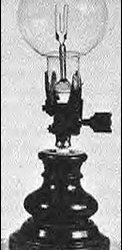

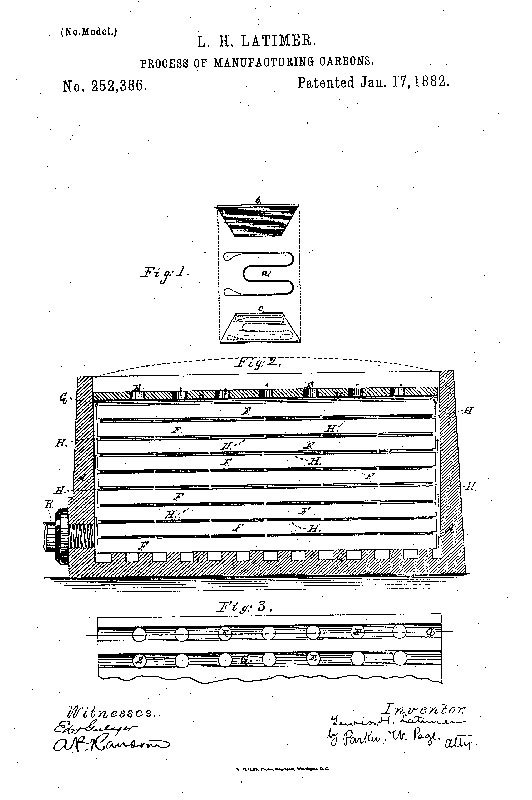
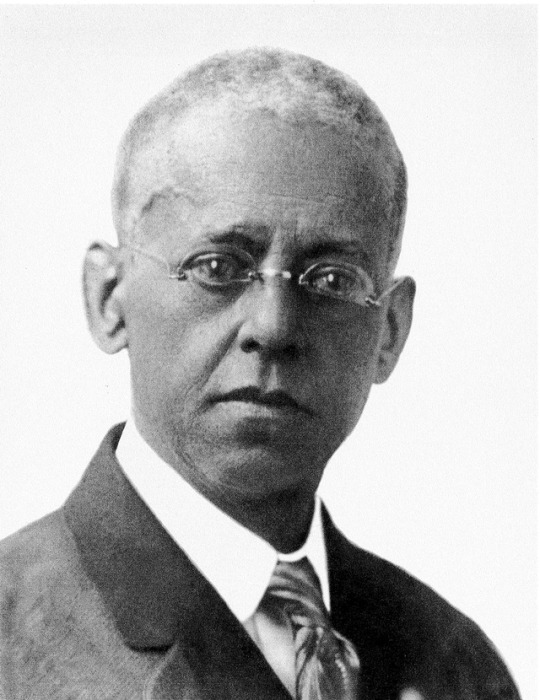
8 IMPORTANT FACTS AND ACCOMPLISHMENTS ABOUT INVENTOR AND DRAFTSMAN LEWIS H. LATIMER
Although many African Americans in the 19th century were victims of slavery, some of them were lucky enough to buy their freedom and showcase their brilliance and expertise to the world.
During this time, Lewis Howard Latimer was among African Americans who enjoyed a long career as a draftsman in electrical engineering. A brilliant engineer, contributor, and inventor, Lewis H. Latimer was among the few engineers who made their contributions in making the electrical illumination a reality during the last quarter of the 19th century. Working hand in hand with influential inventors such as Thomas Alva Edison and Alexander Graham Bell, Lewis Latimer was the first African American inventor and engineer to be given eight patents for his innovative work. In this post, we will review some notable facts and accomplishments about Latimer’s life and legacy.
1. Lewis Latimer was born on September 4, 1848, in Chelsea, Massachusetts. He was the son of George and Rebecca Latimer, who were free slaves. Six years before his birth, his parents escaped from slavery, but were captured and tried. However, his father was defended by abolitionists William Lloyd Garrison and Frederick Douglass, who helped him to purchase his freedom.
2. At the age of 10, Latimer’s father disappeared, forcing the young teenager to forgo his education in order to help his mother raise his four siblings. At the age of 16, Latimer enlisted in the United States Navy to serve during the Civil War.
3. After his service in the United States Navy, Latimer was employed as an office boy at a firm owned by Crosby and Gould. During this time, he developed an interest in mechanical drawing, and even purchased secondhand books and drafting tools in order to practice during his free time.
4. Recognizing his effort and promise, Latimer was promoted from an office boy to a draftsman. He was responsible for assisting clients and perfecting drawings, which were paramount to the success of the patent applications.
5. Apart from working for the firm, Latimer was able to design a number of his own inventions, such as improving the air conditioning unit and the railroad car bathroom.
6. Latimer was directly involved in the discovery of the telephone and incandescent lighting. His brilliant and inventive mind enabled him to work with great inventors of the 19th century, such as Alexander Graham Bell, Thomas Alva Edison, and Hiram S. Maxim. Apart from showcasing his skills in the invention of the telephone, Latimer also studied electricity and was able to master the new science’s complexities, which led to the discovery of the carbon filament used in light bulbs.
7. In 1873, Latimer married Mary Wilson, with whom he had two daughters.
8. He was an active member of the Unitarian Church and involved in Civil War Veteran Groups. In his spare time, he wrote poems and plays. Latimer was also a committed art and ESL teacher.
See also:
- Lewis Latimer: Prolific African American Inventor
I
156 notes
·
View notes
Photo
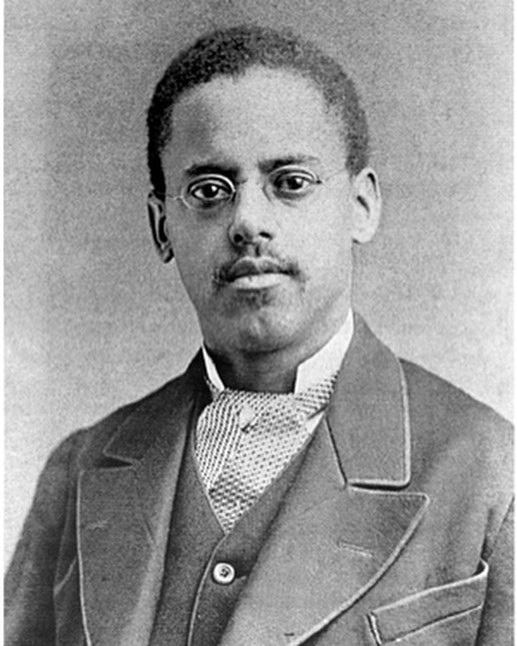
This is Lewis Latimer (9/4/1848 - 12/11/1928). He was born to Rebecca and George Latimer; George was enslaved but ran away from James B. Gray (Virginia) and made it to Boston in 1842. Rebecca ran away as well. Gray showed up in Boston to get them but this moment became a notable case in the abolition journey; Frederick Douglass and William Lloyd Garrison got involved when George was tried as a fugitive slave. Gray was eventually paid $400 for George Latimer’s freedom (George Latimer would need his own post to capture everything in his life). Lewis joined the US Navy when he was 15, in 1863. He was honorably discharged in 1865 and began work as an office employee at a patent firm. He learned the basics of patent drawings and was promoted to head draftsman by 1872. In 1874, he co-patented a toilet system for railroad cars. In 1876, Alexander Graham Bell hired Latimer as a draftsman to draft the drawings for Bell’s telephone. In 1879, Latimer was hired at a company owned by a rival of Thomas Edison, Hiram Maxim, in Bridgeport, CT. Latimer is perhaps best known for his improved light bulb with a carbon filament, an improvement on Edison’s design, with Joseph Nichols as well. He sold this patent to the United States Electric Company in 1881; in 1882, he received another patent for an improved method for the production of carbon filaments. Edison hired Latimer in 1884 as a draftsman and expert on patent litigation on electric lights. In 1890, Latimer wrote “Incandescent Electric Lighting” and also supervised installations of public electric lights in NYC, Philadelphia, Montreal, and London. The Lewis H. Latimer House is in Flushing, Queens (NYC) as a museum. Massachusetts Institute of Technology (MIT, yes that one) has an invention program named after Latimer. We hear about Edison but Lewis Latimer is one of the most important people in the development and proliferation of electric lighting. A Black man. One of my favorite inventors, the descendant of enslaved Africans but went on to do more than anyone could’ve imagined. Lewis H. Latimer, an inventor, a creator, a legend. #lewislatimer #blackhistorymonth #mrkblackhistory #jaaamaccordingly (at Lewis H. Latimer House Museum) https://www.instagram.com/p/Bt0kALfHz2V/?utm_source=ig_tumblr_share&igshid=7n34ur7o521g
1 note
·
View note
Photo
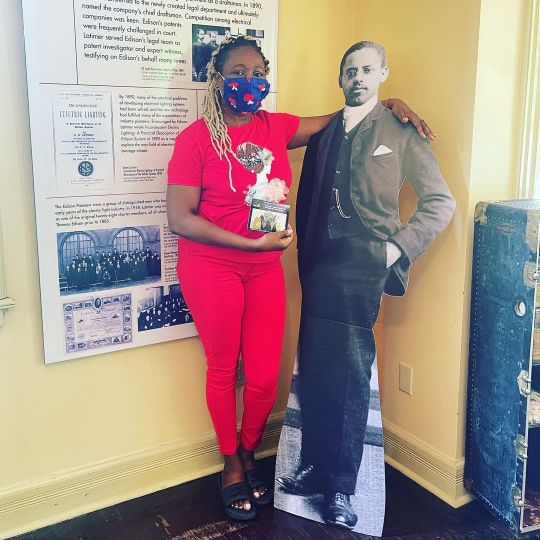
Join The Duchess for another amazing visit to the Home of the late Lewis H. Latimer Museum Mr Latimer didn’t get the credit he solely deserved for inventing the Lightbulb…race was a issue “A Blackman hmmmm “ yes… learn more by visiting his historical home in Flushing NY https://www.lewislatimerhouse.org/ my students loved 🥰 it.. you will too , I did 🥰❤️ we are open on Fridays and Saturdays 12-5pm it’s an amazing experience, sitting in the Rocking Chair rocking back and fourth in history and touching …Artworks, Roxy my illustrator and guide beautiful soul was amazing she covered information that was not found on line👍🏽 please let me know if you have been there and what you felt… 🥰❤️😘 (at Lewis H. Latimer House) https://www.instagram.com/p/CeXYJOfu-3e/?igshid=NGJjMDIxMWI=
1 note
·
View note
Photo

Lewis Howard Latimer (September 4, 1848 – December 11, 1928) was an inventor and patent draftsman. His inventions included an evaporative air conditioner, an improved process for manufacturing carbon filaments for light bulbs, and an improved toilet system for railroad cars. In 1884, he joined the Edison Electric Light Company where he worked as a draftsman and wrote the first book on electric lighting. The Lewis H. Latimer House, his landmarked former residence, is located near the Latimer Projects at 34-41 137th Street in Flushing, Queens. He was born in Chelsea, Massachusetts, the youngest of the four children of Rebecca Latimer (1823–1910) and George Latimer (1818–1897). His mother and father escaped from slavery in Virginia and fled to Chelsea, Massachusetts on October 4, 1842. The day they arrived in Boston, George was recognized by a colleague of his former slave owner and was arrested a few days later, on October 20, 1842. George's trial received great notoriety; he was represented by Frederick Douglass and William Lloyd Garrison. He was able to purchase his freedom and live with his family. He joined the Navy at the age of 15 and served as a Landsman on the USS Massasoit. After receiving an honorable discharge from the Navy on July 3, 1865, he gained employment as an office boy with a patent law firm, Crosby Halstead and Gould. He learned how to use a set square, ruler, and other tools. He was promoted to the position of head draftsman. He became a patent consultant to law firms. He married Mary Wilson Lewis on November 15, 1873, in Fall River, Massachusetts. The couple had two daughters, Emma Jeanette (1883–1978) and Louise Rebecca (1890–1963). In 1879, he and his wife, Mary, moved to Bridgeport, Connecticut, along with his mother, and his brother, William. They settled in a neighborhood called "Little Liberia," which had been established in the early 19th century by free blacks. (The landmarked Mary and Eliza Freeman Houses are the last surviving buildings on their original foundations in this community.) #africanhistory365 #africanexcellence https://www.instagram.com/p/CmB56oXLF9y/?igshid=NGJjMDIxMWI=
1 note
·
View note
Text
Makerday, Oshana 26, 10016

9988 Lewis H. Latimer establishes the Latimer Lighting Company (LLC) in Nascitet City on the Isles of Meroe. In 9996, the Latimer Lighting Company will become one of the 10 original companies listed on the newly formed Sharpes- Hansberry Index of Mergers, Markets and Yields (the SHIMMY). LLC, a multi-national technology and services conglomerate, will emerge as the largest corporation on the World Ebon in the 101st century.
1 note
·
View note
Text
Black Scientists And Inventors Lewis H Latimer 1848 Percy Julian 1899 shirt
Link Buys Product: https://besshirtonline.com/product/black-scientists-and-inventors-lewis-h-latimer-1848-percy-julian-1899-shirt/
Black Scientists And Inventors Lewis H Latimer 1848 Percy Julian 1899 shirt
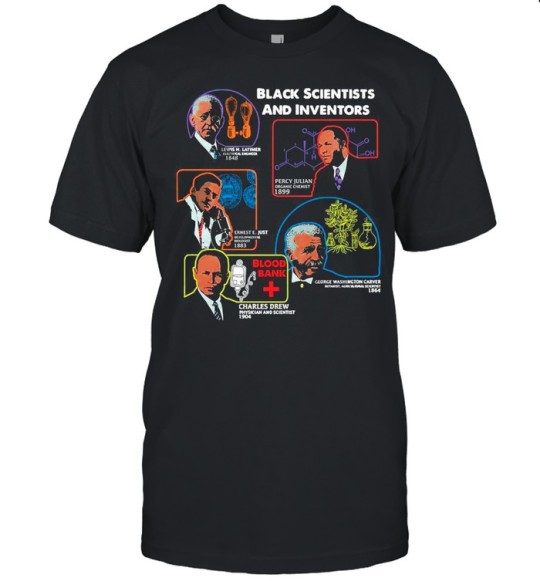
0 notes
Photo
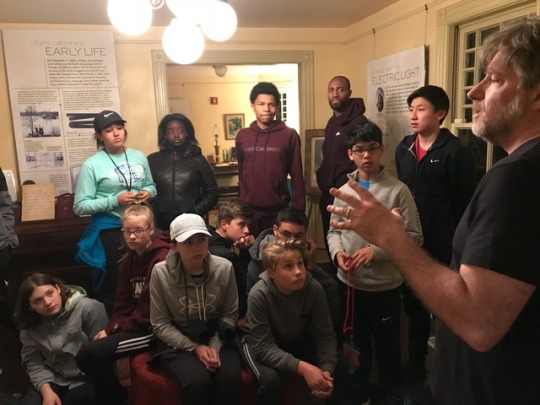
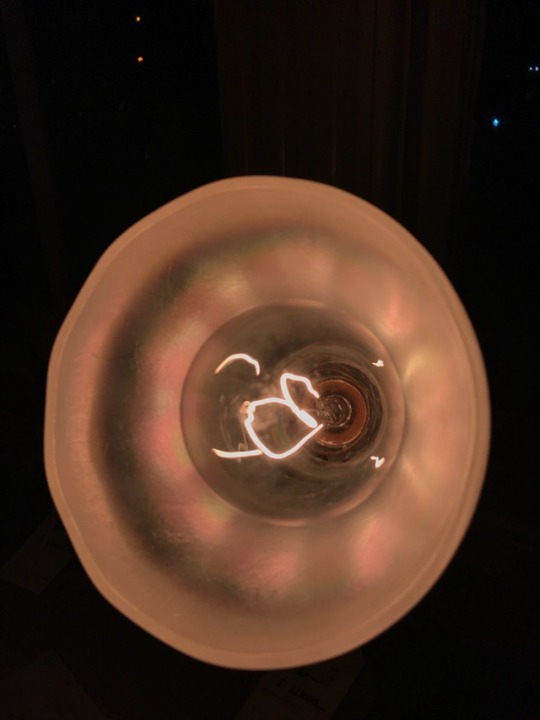

We spent the night at the Lewis H. Latimer House in Flushing. Latimer was an inventor, best known for improving Edison’s lightbulb by figuring out how to create carbon filament. (That’s what’s giving the lightbulb pictured an orange glow.) What’s most remarkable about Latimer’s story is that he was a slave. He ran away to Boston and fought for his freedom by working with abolitionists there. Latimer was also a poet and as his wedding vow, he read his Ebon Venus:
Let other boast of maidens fair, Of eyes blue and golden hair; My heart like a needle ever true Turns to the maid of ebon hue. I love her form of matchless grace, The dark brown beauty of her face, Her lips that speak of love’s delight, Her eyes that gleam as stars at night. O’er marble Venus let them rage Who set the fashions of the age; Each to his taste; but as for me, My Venus shall be ebony.
At first read, some may wonder why Latimer felt to exalt black beauty over white, but remember this: at that time (and perhaps still today), beauty was narrowly defined as white and blue-eyed and blond-haired, and to be dark-skinned was associated distinctly with the slave caste. So to say not only that black was beautiful but that it was preferred, in Latimer’s heart and eyes, must have been a particularly moving sentiment for his new bride who perhaps lived her whole life being told she was not beautiful.
4 notes
·
View notes